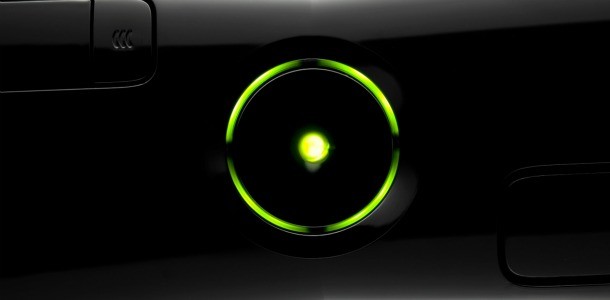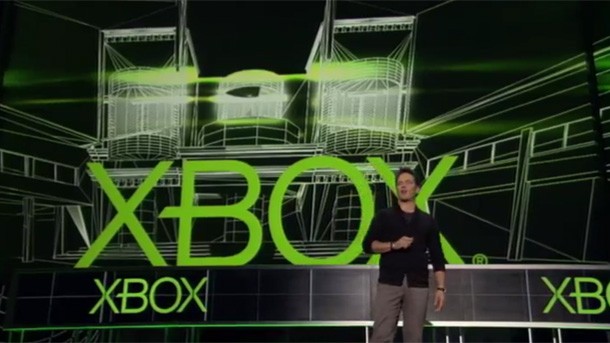Please support Game Informer. Print magazine subscriptions are less than $2 per issue
Your Move, Microsoft

If you were forced to pick one word that summed up Sony’s PS4 reveal, a safe answer would be “connected.” The company line is that the PS4 emphasizes the “play” part of PlayStation, but that only tells some of the story. Nearly everything Sony showed in New York fed back into that concept, ranging from experiences as obvious as playing online with friends to more subtle (and frankly, creepy) interactions such as the console anticipating the games you are likely to buy and downloading them in the background. They even mentioned the Vita, though it was mostly referenced as another way to play PS4 games.
Now that Sony has revealed at least part of its hand, it’s time for Microsoft to follow. While they could show off the Xbox 360’s successor at E3, that seems dangerously late – especially if, like Sony, the company hopes to release new hardware this holiday season. It seems more likely that Microsoft will provide at least a glimpse of its plans before E3 in June, so the new console can go head-to-head with the PS4 on the show floor.
In the meantime, here are some of our ideas as to what Microsoft needs to bring when it’s finally ready to announce the next Xbox.
Leverage Your Relationships
A divide exists between those who say gameplay trumps graphics and others who simply can’t get past ugly games. Whichever side you align with, one thing’s for sure: You’re not going to be getting the deepest gameplay dive at a hardware unveiling. Instead, companies use their stage time to dazzle you with explosive demos, with the occasional concession to more imaginative or risky gameplay options.
Sony showed its hardware with quick looks at Epic’s Unreal Engine 4 and Havok Physics running on the PS4, which should effectively keep Microsoft from showing off those third-party demos. It’s a sad (but true) reality that seeing a marauding ice titan wows the masses for the first time, but risks being yawned off the stage beyond that.
Microsoft lacks the deep well of exclusive franchises that Sony has, so unless it has an entire slate of new IP waiting to be revealed, the company must lean heavily on third parties. We’re likely to see new games from 343 Industries (Halo) and Turn 10 (Forza), but we imagine partners will take center stage. You can look at what wasn’t shown at Sony’s presser for a few hints. Where were the new Call of Duty and Battlefield games? Rocksteady has been quiet for a while. And what’s going on with Bethesda?
Microsoft needs to ensure that third parties are supplying content to the platform you can’t get anywhere else. Gamers like to play games. Make the next Xbox a place where exclusivity is a given. That doesn’t mean that Microsoft shouldn’t be investing even more heavily on its internally developed games. Forza, Halo, and Gears are all great games that have earned large followings, but they can’t cut it alone. Microsoft isn’t likely to get a year’s head start – it needs a system seller.
Keep Your Network Advantage
As we mentioned in the introduction, Sony has ambitious plans for connectivity, particularly on the online front. Sony’s coming out strong with features such as controlling friends’ systems remotely (to help them through difficult sections) and sharing in-game video clips, as well as collecting data on users and their preferences (That last one is probably more appealing to advertisers and other content providers). Microsoft needs to either match each of those bullet points or offer a viable alternative.
Match Or Beat Sony’s System Specs
The guts of the two systems are very similar (if the leaks are to be believed), but one place where Microsoft could find itself behind is in the RAM department. Right now they are rumored to have 8GB DDR3, and Sony has 8GB GDDR5. It’s a downright revelatory difference compared to contemporary console hardware 8GBs – the Xbox 360 gets by on a measly 512MBs – but it’s likely to suffer from bandwidth issues that the PS4’s speedier RAM won’t. It’s not as simple as merely ticking off items on a checklist, but Microsoft should do what they can to stay in line technologically with its main competitor.

Open Up The Marketplace
After all these years, Microsoft still doesn’t know what to do with indie development. The Xbox Indie Marketplace is unpleasant to navigate, and Microsoft does a poor job of both curating and promoting exceptional content. Even devs on Xbox Live Arcade proper have grumbled about the hassle of getting games certified on the service compared to more open platforms like PC and iOS. Post-release patches can be prohibitively expensive for publishers, too.
The solution? Microsoft needs to take note of the stark fact that developers of all sizes have more platform choices than ever before, and decide if they care about that. If not, keep on keeping on. Just don’t bellyache when developers move toward more creatively fertile (and lucrative) pastures. Competing in this space means relinquishing a certain amount of control and taking a smaller cut of the revenue. People are going to create vulgar games – there will be penises. But there will also be reasons for companies to stick around and support games post-launch on the next Xbox, instead of taking a one-and-done approach and putting all future effort toward the Steam release.
And then you have free-to-play and MMO games. Sony looks like they’ll be offering more developer freedom with the PS4. Valve is working on a so-called Steam Box, which would make it even easier to get PC gaming into living rooms. If devs have more flexibility as far as subscriber services and post-launch support in addition to all the benefits that Xbox already has, the idea of playing in Microsoft’s walled garden could become even less appealing.
Make us want all that other stuff
Everything we’ve heard about the next Xbox points to Kinect 2.0 being a bigger part of the gaming experience. The new version purportedly recognizes people with greater fidelity, which could alleviate the unresponsive broken-puppet effect that plagues current Kinect games.
Microsoft has made us sit through Kinect demo after Kinect demo for the past few years, but we’re still waiting to see a must-have game leveraging its functionality in a powerful way. Even if it’s not a mature-rated game with face stomps and torrents of blood, show us something that we’d like to play with our younger relatives. Not just a game we’ll suffer through for the sake of playing with our children, but something we’ll all actively enjoy. Voice commands are an underutilized aspect of Kinect, and if they’re improved, we can only see benefits.
Smartglass is available to download this very minute, but gamers don’t have a lot of reasons to do so. While you’re improving Kinect, develop some Smartglass implementations that make sense. The Wii U is built around two screens. The PS4 is hoping to pump new life into Vita by positioning it as a window to the PS4. Smartglass can be used on a variety of OS’s and platforms. Tap into that flexibility.
Don’t punish the used-games market
Sony hasn’t unequivocally ruled out that the PS4 won’t prohibit support for used games, but they’ve done just about everything short of spelling it out in ink. Most publishers would love to see the used-games market dry up – that’s one reason why those multiplayer passes exist – but doing it via hardware is basically the nuclear option. Customer backlash would be so strong that Microsoft wouldn’t be able to pull this one off unilaterally. Even if you don’t buy used games, imagine this scenario: One system allows you to loan games to a friend and the other doesn’t. Is that enough to influence your purchase? (Full disclosure: GameStop is the parent company of Game Informer.)
Show the box
The gaming press is a weird group. For all that Sony showed last night, writers still managed to be upset that they didn’t get to see the actual console. Put a box on an on-stage pedestal and point at it. Tah dah.










